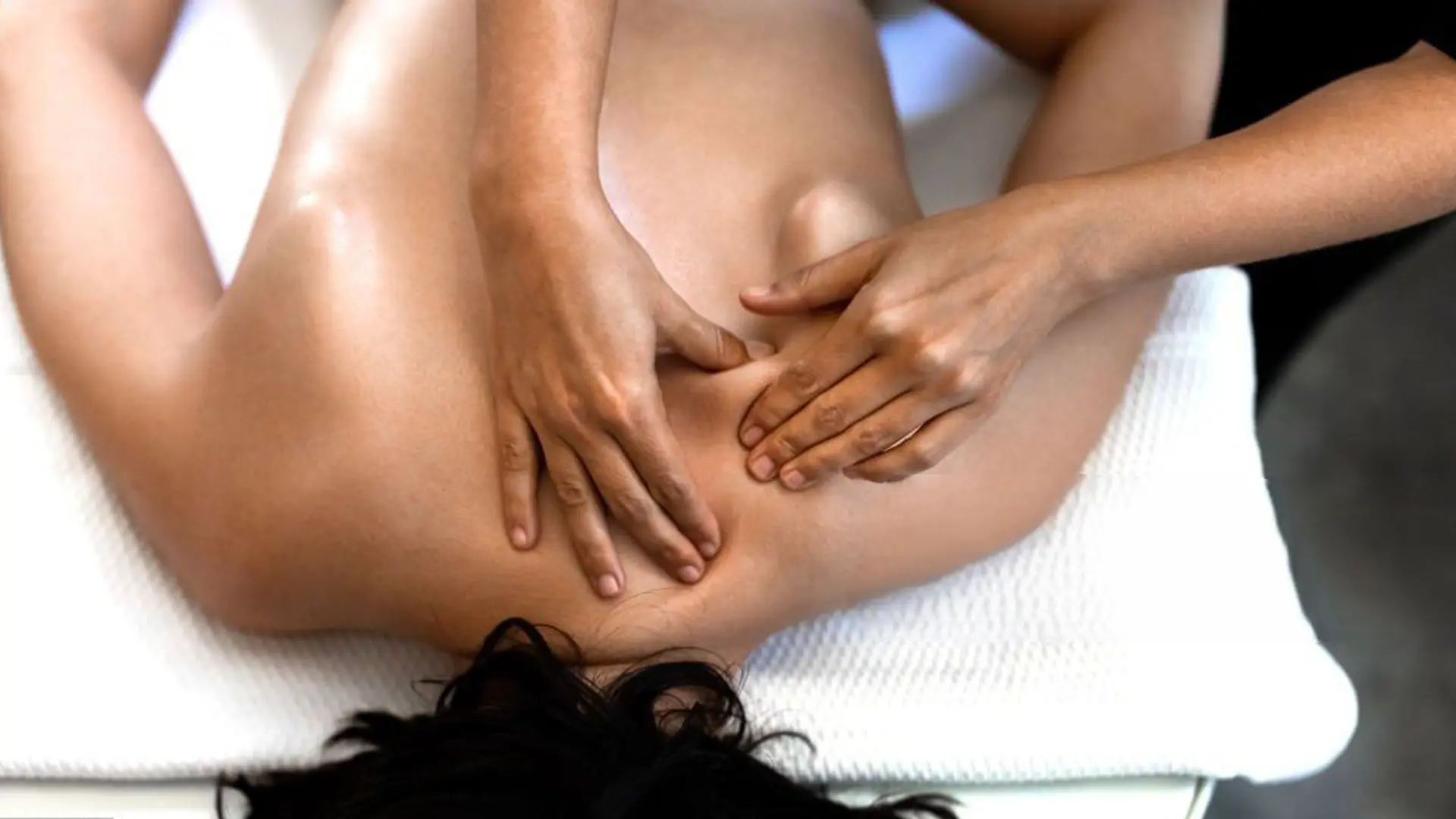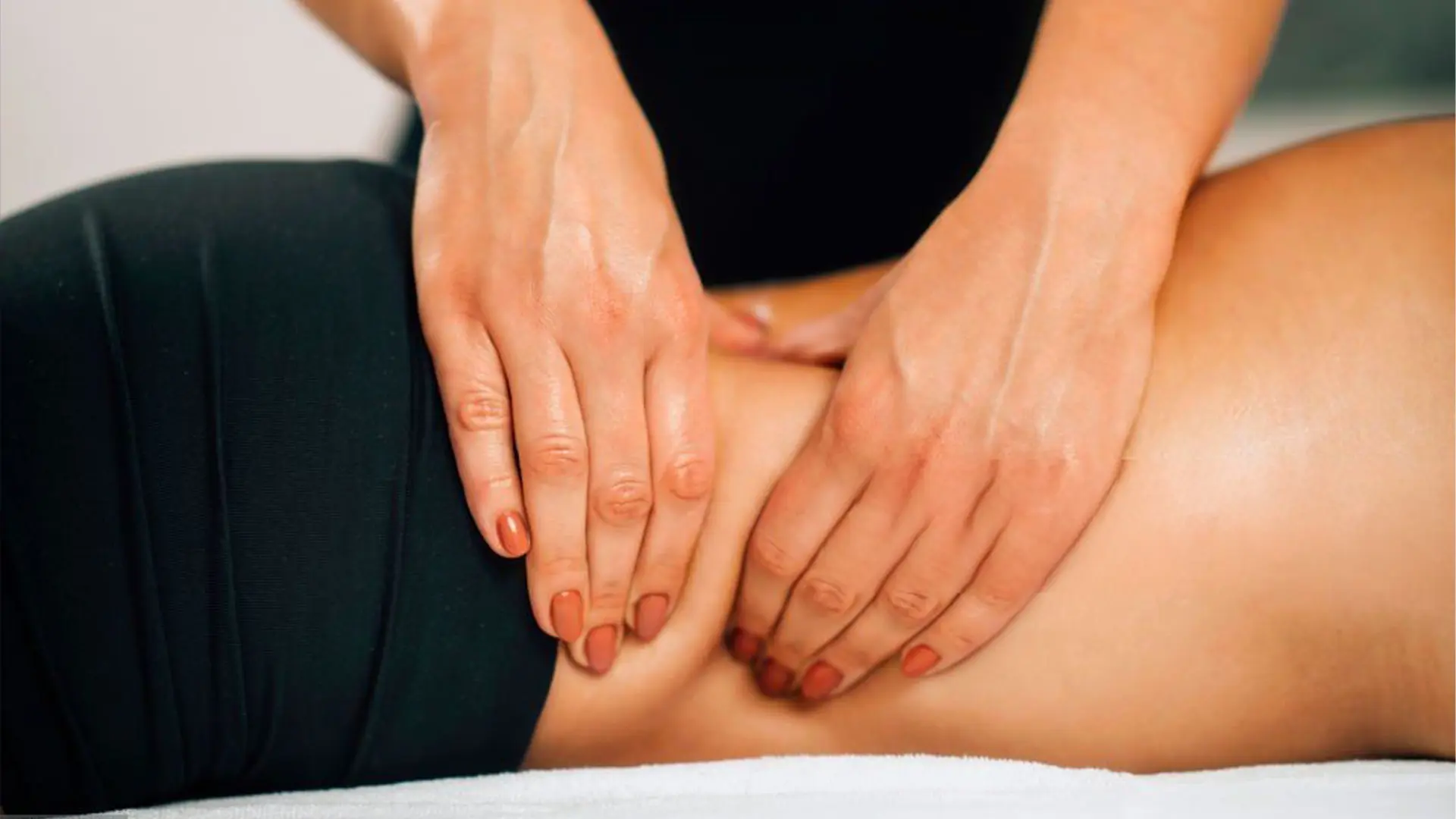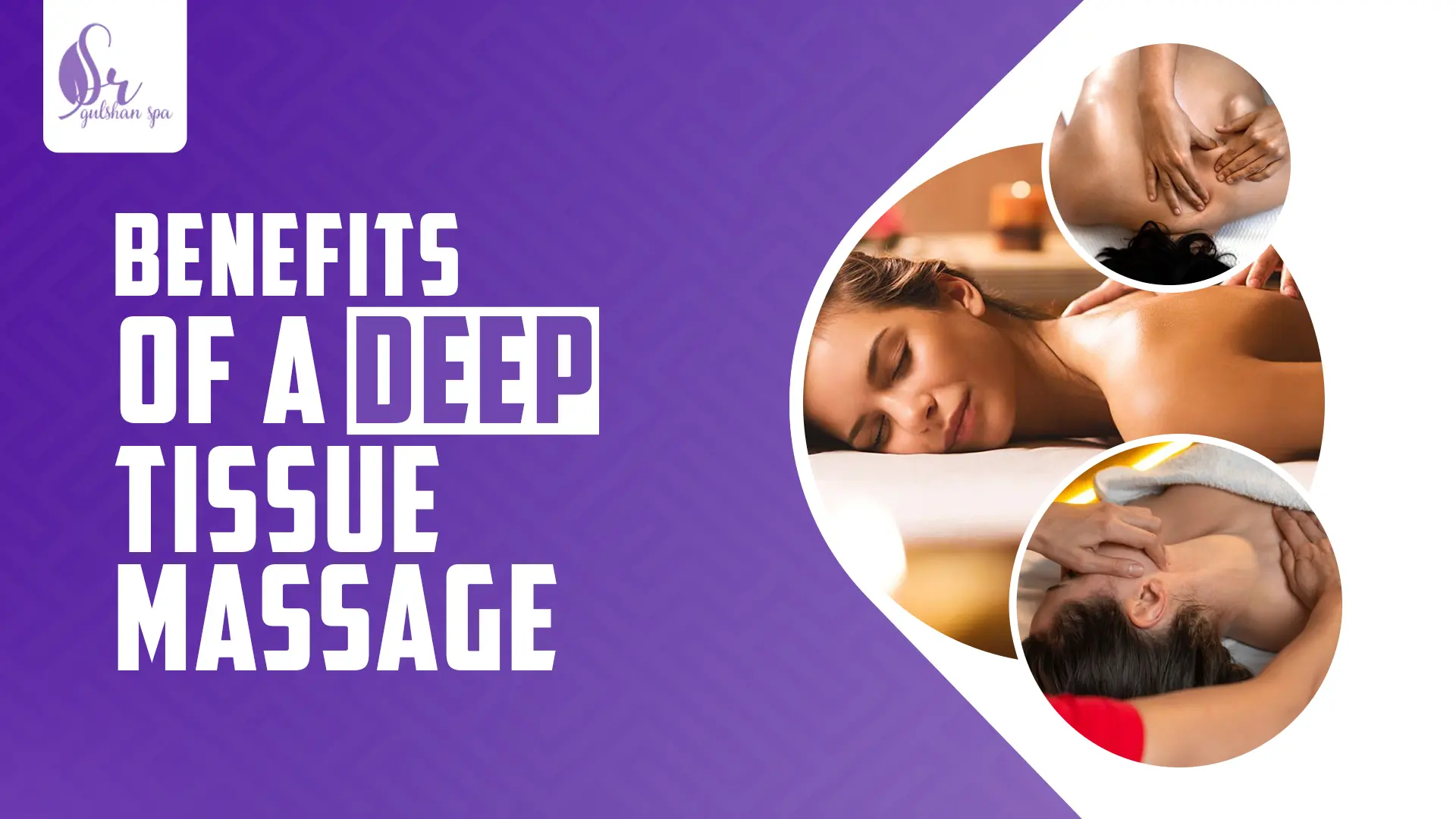Have you been looking for a solution to chronic pain and tension for years? Now is the time to reap the benefits of a deep tissue massage! This focused therapy relaxes the muscle layers, which releases tightness, increases blood flow and you emerge fresh. Whether you’re dealing with everyday stress or soreness, deep tissue massage is beneficial for you.
In this guide, we explore the short- and long-term benefits of deep tissue massage, its techniques, and how it differs from other therapeutic massages in terms of overall health and well-being.

10 Surprising Health Benefits of a Deep Tissue Massage
Generally, deep tissue massage is a procedure for therapeutic purposes targeting deep muscles and tissues. The massage characterised by strong and brisk strokes, helps alleviate chronic pain, improves flexibility, and facilitates relaxation. The following are some of the advantages of deep tissue massage:
Short-Term Benefits of a Deep Tissue Massage
-
Relieves Chronic Pain
Deep tissue massage targets the deeper layers of muscles for those with chronic pain. This approach helps relieve long-standing musculoskeletal issues, easing the discomfort of chronic back pain and neck stiffness.
-
Improves Flexibility and Mobility
Deep tissue massage loosens tight muscles and improves circulation, which enhances joint flexibility. The increased range of motion improves one’s posture and makes movements smooth and fluid for those who have restricted mobility.
-
Improves Circulation
One of the major benefits of having a deep tissue massage is increased blood circulation. The massage aids in providing the tissues with the necessary nutrition and oxygen by increasing the flow of blood into the muscles and tissues. Also helps in the elimination of metabolic waste products.
-
Reducing stress hormones
There is a significant reduction in cortisol levels in the body after deep tissue massage. Additionally, it promotes the secretion of serotonin and endorphins, allowing a person to be emotionally stable and relaxed.
-
Aids Sleep Quality
It regulates sleep by soothing the nervous system and muscle tension. Generally, this form of therapy triggers serotonin production, which is very important in regulating sleep patterns and improving overall rest.
Long-Term Benefits of Deep Tissue Massage

-
Supports Injury Recovery
Deep tissue massage is very effective for injured patients. It helps in breaking down scar tissues and improves circulation in the injured parts, which accelerates the process of healing and helps in long-term recovery.
-
Lowers Blood Pressure
As well as lowering systolic blood pressure, deep tissue massage also reduces diastolic blood pressure. This contributes to good cardiovascular health and ensures long-term benefits for people with hypertension or susceptibility to heart disease.
-
Improves Posture
Deep tissue massage nourishes good posture by eliminating muscle imbalances and chronic tension. The spine may be more naturally aligned once these tight muscles relax, reducing the risk of long-term postural strain.
-
It Loosens Scar Tissue and Adhesions
Does the scar or previous injury keep you stiff? Deep tissue massage could assist in the breaking up of adhesions and scar tissues, limiting movements and comfort. Whatever the type of surgical recoveries or chronic ones, a better range of motion with such a modality is possible along with relief.
-
Improves Overall Well-being
The benefits of deep tissue massage include improved circulation, decreased tension, and even relief from chronic conditions like fibromyalgia when performed regularly. Indeed, such benefits extend to physical health improvement and a higher quality of life.
How is Deep Tissue Massage Different from Other Massage?

The advantages of deep tissue massage are its therapeutic depth and precision, as well as its clinical focus. Here is a quick summary of key differences:
| Point of Difference | Deep Tissue Massage | Swedish Massage | Thai Massage | Hot Stone Massage | Reflexology |
| Pressure | Firm and concentrated | Light to moderate | Dynamic stretching | Gentle heat and strokes | Targeted reflex zones |
| Focus | Chronic pain, tight muscles | Relaxation | Flexibility, energy flow | Stress relief | Holistic energy balance |
| Massage Techniques | Slow strokes, deep pressure | Effleurage, kneading | Compression, stretching | Heat application | Reflex point stimulation |
| Benefits | Pain relief, injury recovery | Stress reduction | Improved flexibility | Deep relaxation | Energy realignment |
Intensity and Depth of Pressure
Deep tissue massage involves firm, sustained pressure targeted deep into muscle layers and fascia. Unlike Swedish massage, it relies on slow, deliberate movements to relieve deeply entrenched tensions and misaligned tissues.
Using Therapeutic Intentions to Relieve Pain
Pains like sciatica and lower back pain can be treated with this procedure, as it is designed for treating chronic pain and injuries. This work addresses the source directly and specifically for very precise rehabilitation or maintenance work around musculoskeletal dysfunction.
Specific Techniques Used
Deep tissue massage involves slow, deliberate strokes and sustained pressure, using fingertips, elbows, and knuckles to release adhesions and scar tissue. While Thai massage involves dynamic stretches, aromatherapy massage uses calming strokes and essential oils to create a calming environment.
Highly Targeted and Personalized Approach
Deep tissue massage is tailored to individual needs and pinpoints problem areas, such as stiff necks or tight shoulders. A modality such as lymphatic drainage focuses on the whole body, while this practice focuses on specific muscle groups.
Who Can Benefit From a Deep Tissue Massage?
A wide range of lifestyles and conditions can benefit from deep tissue massage. The treatment uniquely combines relief and therapy.
Chronic Pain Sufferers
Deep tissue massage is required to treat pain syndromes such as sciatica, lower back pain, and stiff neck. By targeting the deep layers of the muscles and their sheaths, pain is relieved, bound-up rigidities are loosened, and mobility is restored.
Athletes and High-Performance Enthusiasts
Deep-tissue massage is a valuable recovery method because it enables blood circulation and softens inflammation. As a result, scar tissue in the healing muscles is broken up.
Professionals with Postural Strain
Poor posture results from postural imbalances influenced by the modern work environment with much sitting and poor ergonomics. Realigning muscles and dissipating chronic tension promotes better posture and eases strained areas like the neck, shoulders, and lower back.
Patients Who Are Recovering from Injury
The benefits of a deep tissue massage therapy can be seen in the recovery of tendonitis, sprains, and soft tissue injuries.
Stress and Anxiety Management Seekers
This therapeutic massage promotes physical healing as well as emotional and mental well-being. By reducing cortisol levels, increasing serotonin and endorphins, and easing muscle tension, it induces deep relaxation and emotional balance.
People with Special Medical Conditions
Deep tissue massage will be highly beneficial for those suffering from chronic conditions such as fibromyalgia, arthritis, and plantar fasciitis.
Who Should Not Use Deep Tissue Massage?

While deep tissue massage works for most, it doesn’t work for all. Some will have contraindications to this modality of therapy due to their particular health condition or circumstance. Here’s who should avoid, or at least approach with caution, this therapy:
People with Medical Conditions: Avoid if you have bleeding disorders or severe osteoporosis, or take blood thinners due to bruising and fracture risks.
Pregnant Individuals: Not recommended without medical guidance, especially during the first trimester, due to potential complications.
Those with Open Wounds: Avoid if you have cuts, burns, rashes, or skin infections to prevent irritation or spreading infection.
Post-Surgery Patients: Recent surgery patients should avoid deep tissue massage until fully healed and cleared by a doctor.
Acute Injury Cases: Not indicated for an acute injury, pulled muscle, sprain, or inflammation of a region as this will further deteriorate the condition.
Uncontrolled Hypertensive Patients: Those suffering from uncontrolled hypertension must avoid it as it may cause a temporary increase in blood pressure.
Neurological or Sensory Defects: Neuropathy and other related disorders may affect the sensation and thus prevent the proper feeling of the tissue and its potential tissue damage.
Sharp Pain During Massage: The feeling of extreme pain during a massage may indicate improper pressure and the use of incorrect techniques.
Potential Side Effects of Deep Tissue Massage
While deep tissue massage offers numerous benefits, it can sometimes lead to temporary side effects. Being informed about these effects helps manage expectations and ensures a safer experience:
Muscle Soreness: Intense pressure can cause temporary soreness that subsides within 1-2 days.
Bruising: Minor bruising may occur, especially in sensitive areas or delicate skin.
Fatigue: The release of tension and toxins can lead to temporary exhaustion.
Headache: The pressure on the trigger points or dehydration may cause mild headaches.
Localized Discomfort: The areas worked on might be tender or inflamed for a while.
Dizziness or Lightheadedness: Sudden relaxation or sudden movement after massage may lead to dizziness.
Skin Sensitivity: The friction can cause irritation or hypersensitivity in some people.
Temporary Inflammation: The manipulated tissues can slightly swell, especially around joints or injuries.
How to Incorporate Deep Tissue Massage into Your Wellness Routine
Deep tissue massage is incorporated into one’s wellness routine in a very thoughtful and customized way. Here is how you can reap its benefits to the fullest:

Setting the Right Frequency
The ideal frequency of deep tissue massage sessions depends on your specific needs:
- Chronic Pain or Injury Recovery: 1-2 sessions weekly can help alleviate discomfort and speed healing.
- General Health: 1-2 sessions per month to maintain the musculature and assist with stress.
- High-Stress Levels: Weekly sessions offer consistent relaxation and tension relief.
Combining with Complementary Therapies
Deep tissue massage is even more effective if combined with other therapeutic practices such as:
- Myofascial Release Therapy: Relaxes tension on the fascia to improve flexibility.
- Trigger Point Therapy: Relaxes the muscle knots in localized areas of pain.
- Swedish Massage Therapy: Relaxes the body and improves circulation.
- Acupuncture Massage Therapy: This incorporates massage with the energy-balancing benefits of acupuncture.
Listening to Your Body
Pay attention to how your body responds after the massage. Your therapist can modify techniques to better suit your needs based on your discomfort or ease areas. Of course, supporting your body in between massages is also crucial:
- Stay Hydrated: Help flush out toxins with water.
- Provide Feedback: Give feedback to the therapist about what is working and what isn’t.
- Allow Rest: Give the body time to recover and integrate the benefits.
Why Choose SR Gulshan Spa for Deep Tissue Massage in Dhaka?
At SR Gulshan Spa, we’re proud to offer superior deep-tissue massages that perfectly address your health and wellness needs. The highly trained and licensed therapists enhance the techniques of the treatments to enable target areas where tension can lead to chronic pain, muscle stiffness, and stress.
Each spa treatment service is personalized according to an individual’s needs, allowing one to achieve tangible benefits related to circulation, recovery, and relaxation within a session. Our goal is to assist you in achieving better overall health by tailoring your treatment to your body’s needs.
Final Thoughts
Now that you’ve discovered the incredible benefits of a deep tissue massage, it’s time to prioritize your health and relaxation. This therapy is designed to release tension, reduce pain, and restore balance in your life. At SR Gulshan Spa, our highly trained therapists accord personalized treatments according to your concerns. Whether be it recovery, stress release, or overall wellness, let our spa be your haven. Why wait? Take charge of your well-being today. Book your deep tissue massage and unlock the door to long-lasting relaxation and vitality.
Frequently Asked Questions
What is deep tissue massage?
Deep tissue massage is a technique that involves realigning and disposing of the deeper layers of muscles and connective tissue. It utilizes slow, firm strokes to relieve chronic pain and tension and improve mobility.
Does deep tissue massage get rid of knots?
Yes, it is a very effective way to break down muscle knots by using sustained pressure and strokes that relax the muscles, releasing tension to allow improved blood flow and flexibility.
How long do the benefits of a deep tissue back massage last?
Depending on the individual’s condition, activities involved, and massage sessions, the benefits can last for days to weeks.
How do I find a qualified deep tissue massage therapist?
Look for licensed, experienced massage therapists who specialize in deep tissue techniques. Check reviews, recommendations, and certifications to assure quality and professionalism.
Is regular deep tissue massage beneficial?
Yes, regular sessions decrease chronic tension, improve posture, enhance circulation, and provide consistent relief from physical discomfort, contributing to better long-term health.

